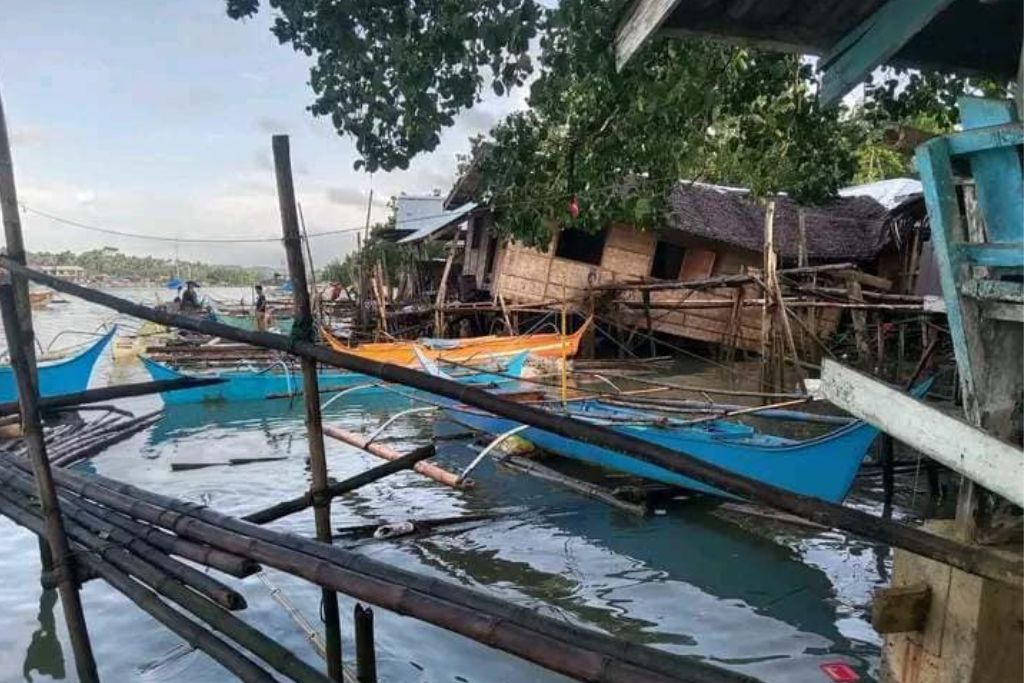The Philippines is located in the “Pacific Ring of Fire,” an area prone to frequent earthquakes and volcanic eruptions. Recently, Mindanao – the country’s second-largest island – was hit by a 7.4-magnitude earthquake which caused significant damage and trauma. Despite a tsunami warning, there were limited human casualties, although homes and infrastructure suffered heavily. The country faces the threat of “The Big One,” a potential, massive earthquake that could potentially strike the Philippines with devastating consequences, especially given the historical context of earthquakes that have occurred in the archipelago.
—
Background
The Philippines is no stranger to natural disasters, given its status as one of the most “disaster-prone” countries in the world. We are routinely afflicted by earthquakes and volcanic eruptions as we are situated on the western edge of the Pacific “Ring of Fire,” an area particularly prone to these kinds of disasters. The country also sees an average of 22 tropical cyclones entering its Area of Responsibility every year and, among these, about six or seven result in significant damage and dozens of casualties.
The second-largest and southernmost major island in the Philippines, Mindanao, is battered. We are cognisant that an earthquake is a natural occurrence, happening when there is a sudden release of energy in the Earth’s crust, eliciting seismic waves that cause the ground to shake.
My family and the rest of our neighbors had already settled down after their work, odds and ends, and were partaking in the weekend night. At least until 10:37 pm. We were shaken by one of the strongest earthquakes we had experienced in our lives. People struggled to breathe, and even those who experienced it repeatedly found the occurrence very disturbing and different from previous quakes. We moved farther inland and waited, thinking it would eventually subside, as we were accustomed to. However, we slowly surrendered to the fact that we would experience aftershocks for several days or possibly even a few months.
As indicated by the Philippine Institute of Volcanology and Seismology (PHIVOLCS), the December 2 quake was caused by movements in the Philippine trench. At this instant, this narrative nabs the ongoing documentary of our experiences in Mindanao, where our community is still experiencing jolts of trauma and anxiety amidst the ongoing colossal quake. The earthquake was first classified as a 7.5 magnitude earthquake by the PHIVOLCS, though the institute later adjusted it to 6.9 and ultimately revised it to 7.4.
Following the high-magnitude quake, the Pacific Tsunami Warning Center initially expected tsunami waves in Southern Philippines, Indonesia, Palau, and Malaysia though fortunately, all warnings were eventually lifted. More than 600 aftershocks were documented, fluctuating between 1.4 to 6.5 in magnitude, according to the European-Mediterranean Seismological Centre. PHIVOLCS recommended caution as people resumed normal activities, aftershocks continued to instill fear, and the lengthy list of records continued to increase.
The quake killed at least three people and left 79 injured. Homes and infrastructure have been significantly damaged, and a huge number of buildings were destroyed. The Philippines, home to a large number of rural areas, is generally ill-equipped to deal with such natural catastrophes, contrarily to some countries – such as Japan – which have developed a “robust building code requiring all buildings to be built to withstand earthquakes.” Aside from structural damage to buildings and infrastructure, other less widely recognized effects include landslides, changes in water sources – which can lead to long-term alterations in local hydrology and water contamination, disruption of natural processes, and irreversible damages in some coastal areas.

Is “The Big One” Yet to Come?
Stories of “The Big One” have accompanied me throughout my whole life. The recent 7.4-magnitude earthquake that struck Mindanao has not yet been dubbed “The Big One,” and people doubt it will ever happen.
“The Big One” has been a historic concern for everyone in the Philippines, dating back centuries. Judging by its name, it is expected to be truly colossal. The Philippines has a history of colossal earthquakes, such as the 1976 Moro Gulf earthquake (7.9 magnitude, 17,000 casualties) and the 1990 Luzon earthquake (7.8 magnitude, 4,390 injuries, 1,283 deaths).
According to a 2023 study, 6,158 people died following earthquakes between 1599 and 2020. “The Big One” is predicted to strike with a 7.2 magnitude on the West Valley Fault (WVF), and it is believed to have the potential to kill at least 34,000 people. In the last 1,400 years, a total of four major earthquakes have occurred on the WVF.
Unfortunately, there is no “reliable technology in the world that can confidently predict the exact time, date, and location of large earthquakes.” Scientists can decipher a recurrence interval, which refers to the average time span between earthquake events. As brought up earlier, the Philippines is inured to natural catastrophes and, given the archipelago’s proximity to active faults, earthquakes are no new occurrence.
According to PHIVOLCS, the WVF’s most recent movement occurred in 1658, nearly four hundred years ago. This hints that we might be on the brink of another major fault movement. While a 7.2 magnitude may not sound as brutal, given the Philippines’ historical record, and with certain seismological projections predicting the possibility of another 8.5-magnitude earthquake occurring offshore, a substantial shift along the West Valley Fault could set the stage for a catastrophe of unprecedented magnitude in a country that is far from ready to deal with its consequences.
Our Country Is Not Ready
The country’s inadequacies boil down to a complex synergy of factors but first and foremost the economic challenges that plague the archipelago. The Philippines, a “developing” country and, according to a 2022 report by the UN International Children’s Emergency Fund (UNICEF), the pandemic left 18% of its population – circa 20 million people – in poverty.
Beholding the bleak consequences of poverty in my homeland, I have seen firsthand how high birth rates and poor governance contribute to a dire situation. Children end up living in squalor, constructing makeshift homes under bridges, and foraging for food on busy highways. I have witnessed an 11-year-old shouldering the responsibility of a 2-year-old sibling while pleading for some food.
And now, the imminent threat of “The Big One” amplifies the vulnerability of these marginalized lives, given their already precarious existence. The lack of suitable shelter and infrastructure leaves them exposed to unprecedented risks.
Over the decades, the nation has struggled to provide a vigorous infrastructure capable of serving the needs of its population, which now exceeds 113 million. Additionally, Filipinos suffer from the toll of poor governance – a subject that has always been a topic of debate, causing divisions and wedges in most communities due to political polarization.
Given that poverty, inefficient resource allocation, inadequate infrastructure development, policy instabilities, and social inequalities are just a few of the factors making the country ill-equipped to withstand destructive natural hazards, Filipinos stand to demand a strategy that not only lifts the most vulnerable out of poverty but also fortifies the nation against the impending threat of an unprecedented earthquake.
You might also like: 4 Biggest Environmental Issues in the Philippines in 2024



















